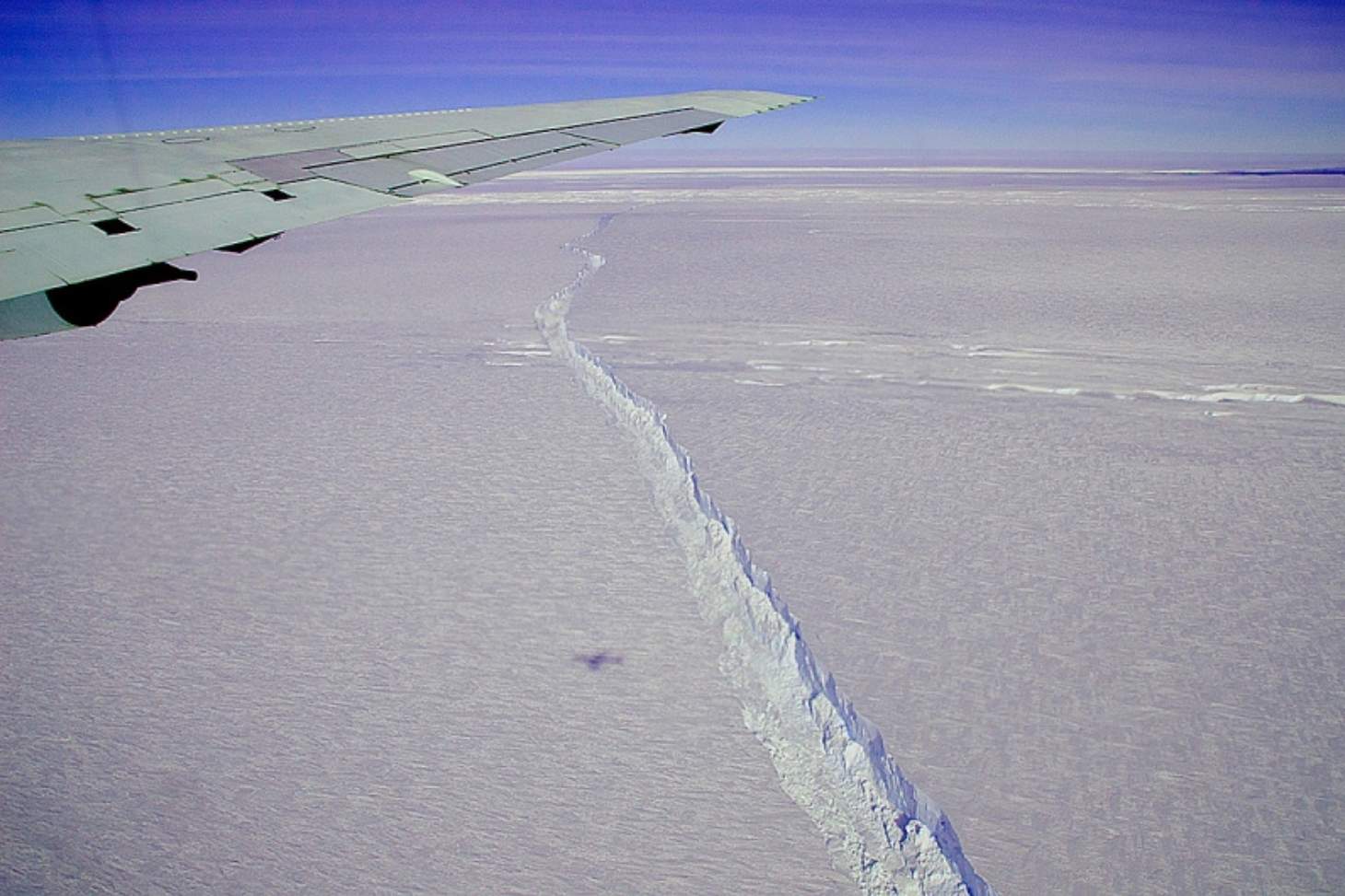A New Map of Antarctica Reveals Never-Before-Explored Seafloors
Research
On January 8, 2025

Around the edges of the Antarctic ice sheet, glaciers flow toward the ocean, forming long floating ice shelves that regulate the flow of ice from the sheet into the ocean.
The increased loss of mass from the Antarctic ice sheet has been attributed to the significant weakening of these floating ice shelves. This weakening originates from the advection of warm, saline waters of circumpolar origin onto the continental shelf. These waters are then channeled beneath the ice shelves, where they erode the ice from below. Although this process is well understood, the pathways of these warm waters from the abyssal plain to the grounding line remain largely unknown for most glaciers around the ice sheet. This is a major limitation for models predicting the future evolution of the Antarctic ice sheet: without accurate maps of the seafloor, the models cannot correctly simulate the flow of warm water beneath the ice shelves and therefore cannot accurately predict their melting.
The lack of precise measurements of seafloor topography is not accidental. Field campaigns in this region are particularly challenging and costly due to Antarctica’s extreme weather conditions, and the presence of icebergs and dense sea ice, which greatly restrict mobility during missions. Moreover, the specific characteristics of the ice shelves add another layer of complexity: only autonomous submarines (or seismic measurements) can gather data beneath them. As a result, only through expensive missions is it possible to cover even small portions of the Antarctic seafloor—missions in which some vehicles may never resurface.
However, there is an indirect method for measuring seafloor bathymetry: gravimetry. Since the gravitational signal is proportional to the mass beneath the gravimeter, it is possible to invert this signal and, under certain assumptions, map bathymetry. This approach, while less precise than direct measurements by ship, has the advantage of being conducted from an airplane, allowing much larger areas to be covered. This method was applied in a collaboration between scientists from the University of California, Irvine (USA), the Institut des géosciences de l’environnement (IGE/OSUG - CNRS/INRAE/IRD/UGA), and TU Dresden (Germany).
The researchers used a unique archive of gravimetric measurements compiled by collaborators at TU Dresden. These data include a wide variety of field campaigns conducted in Antarctica since the 1980s, by airplane, ship, on foot, and even from space. “If we want our map to be accurate, it’s always crucial to guide the gravimetric model with point-based field observations,” says Raphaëlle Charrassin, the study’s lead author. The scientists also collected a vast amount of data from sonar measurements (ships), CTD (Conductivity, Temperature, Depth) instruments, and even sensors attached to seals (see MEOP).
The results of this study reveal a new image of the Antarctic seafloor. For most previously unknown regions, this mapping highlights deep canyons under the ice shelves and across the continental shelf, which are key to transporting warm water from the abyssal plain to the glaciers. “These underwater valleys are impressive, reaching depths of over 1,500 meters!” says R. Charrassin, “these are key feature for the advection of warm oceanic waters to the ice sheet”. A comparison of this new map with ocean temperature measurements identifies the most vulnerable sectors of the ice sheet—those directly exposed to warm waters—and those protected by shallow seafloors.
The findings of this study will improve simulations of warm water circulation around Antarctica, and consequently, models of the evolution of the polar ice sheet and its impact on sea-level rise. They also highlight a critical data gap, particularly in East Antarctica—a highly vulnerable region with significant sea-level rise potential.
The lack of precise measurements of seafloor topography is not accidental. Field campaigns in this region are particularly challenging and costly due to Antarctica’s extreme weather conditions, and the presence of icebergs and dense sea ice, which greatly restrict mobility during missions. Moreover, the specific characteristics of the ice shelves add another layer of complexity: only autonomous submarines (or seismic measurements) can gather data beneath them. As a result, only through expensive missions is it possible to cover even small portions of the Antarctic seafloor—missions in which some vehicles may never resurface.
However, there is an indirect method for measuring seafloor bathymetry: gravimetry. Since the gravitational signal is proportional to the mass beneath the gravimeter, it is possible to invert this signal and, under certain assumptions, map bathymetry. This approach, while less precise than direct measurements by ship, has the advantage of being conducted from an airplane, allowing much larger areas to be covered. This method was applied in a collaboration between scientists from the University of California, Irvine (USA), the Institut des géosciences de l’environnement (IGE/OSUG - CNRS/INRAE/IRD/UGA), and TU Dresden (Germany).
The researchers used a unique archive of gravimetric measurements compiled by collaborators at TU Dresden. These data include a wide variety of field campaigns conducted in Antarctica since the 1980s, by airplane, ship, on foot, and even from space. “If we want our map to be accurate, it’s always crucial to guide the gravimetric model with point-based field observations,” says Raphaëlle Charrassin, the study’s lead author. The scientists also collected a vast amount of data from sonar measurements (ships), CTD (Conductivity, Temperature, Depth) instruments, and even sensors attached to seals (see MEOP).
The results of this study reveal a new image of the Antarctic seafloor. For most previously unknown regions, this mapping highlights deep canyons under the ice shelves and across the continental shelf, which are key to transporting warm water from the abyssal plain to the glaciers. “These underwater valleys are impressive, reaching depths of over 1,500 meters!” says R. Charrassin, “these are key feature for the advection of warm oceanic waters to the ice sheet”. A comparison of this new map with ocean temperature measurements identifies the most vulnerable sectors of the ice sheet—those directly exposed to warm waters—and those protected by shallow seafloors.
The findings of this study will improve simulations of warm water circulation around Antarctica, and consequently, models of the evolution of the polar ice sheet and its impact on sea-level rise. They also highlight a critical data gap, particularly in East Antarctica—a highly vulnerable region with significant sea-level rise potential.
Published on January 10, 2025
Updated on January 21, 2025
Updated on January 21, 2025
Bibliography
Bathymetry of the Antarctic continental shelf and ice shelf cavities from circumpolar gravity anomalies and other data
Charrassin, R., Millan, R., Rignot, E. et al.
Sci Rep 15, 1214 (2025)
Charrassin, R., Millan, R., Rignot, E. et al.
Sci Rep 15, 1214 (2025)
Scientific contact
Romain Millan
Researcher CNRS at IGE/OSUG
Researcher CNRS at IGE/OSUG

